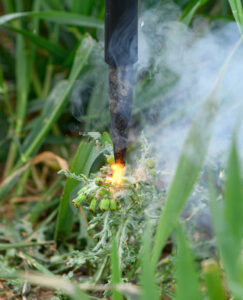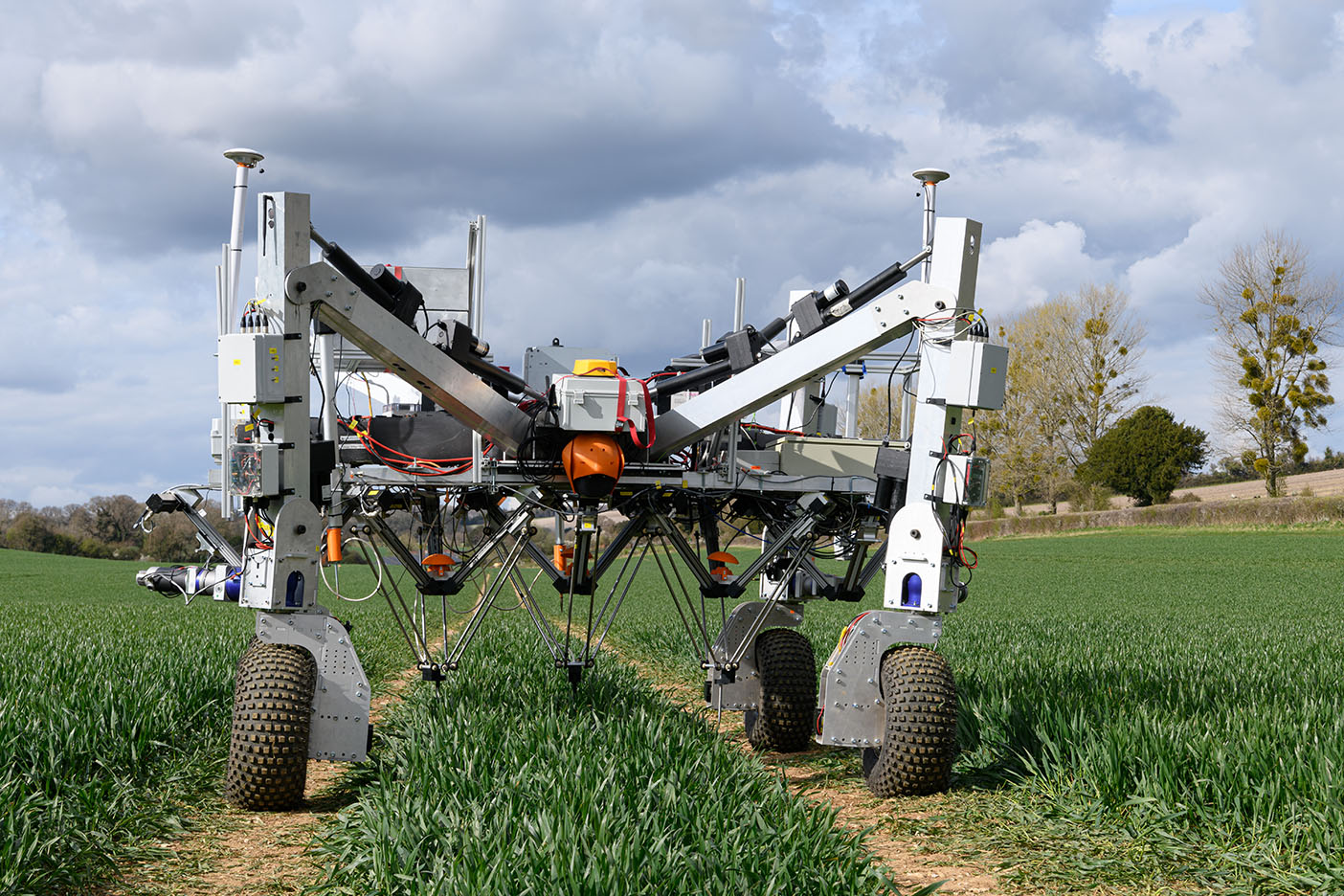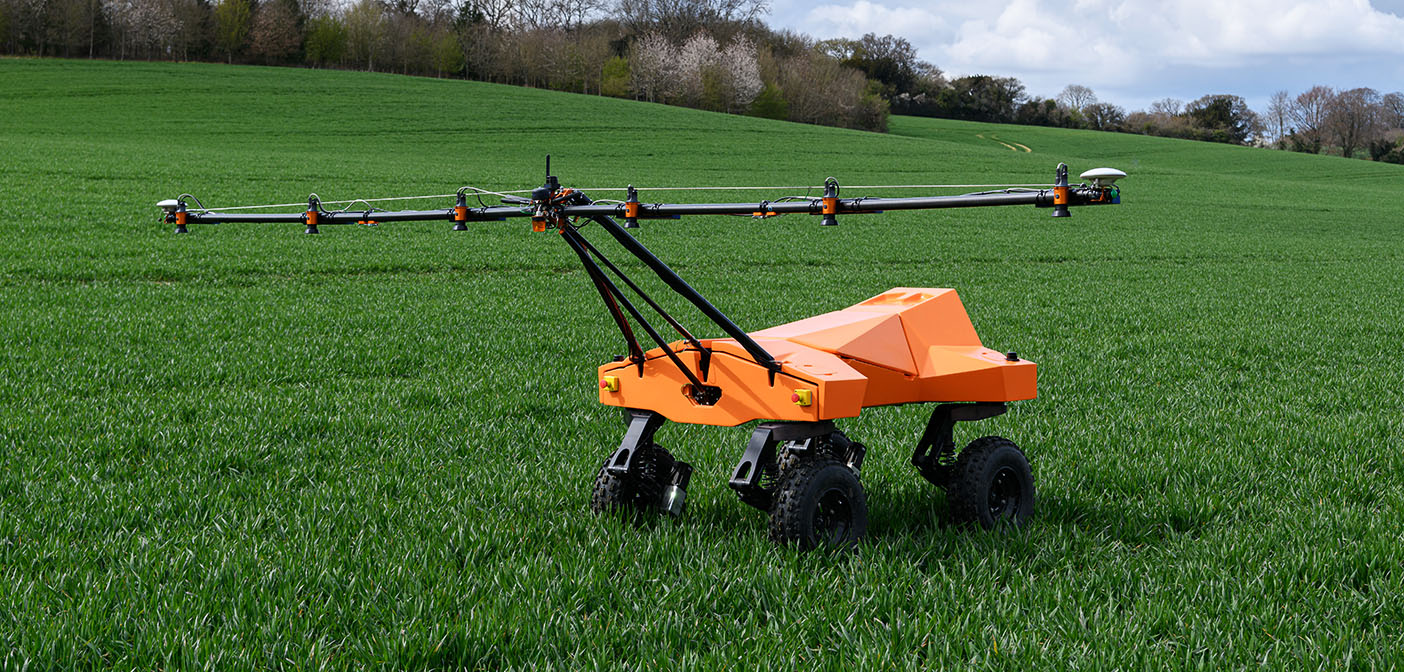British agtech start-up, Small Robot Company (SRC) is already well known for its intelligent farming robots Tom, Dick and Harry. Today the firm has announced that field monitoring robot ‘Tom’ is commercially available and entering service on UK farms. Manufactured in Northumberland by Tharsus, Tom will also be going into 5G trials in Dorset in the autumn in the £8 million 5G RuralDorset project.

No herbicides or other chemicals required
In the current herbicide heavy farming system up to 95% of applied chemicals are wasted, SRC’s new non-chemical precision weeding technology will be significantly more environmentally friendly and better for biodiversity. In future, Tom will also gather data from multiple sources, such as sensors and microphones for birdsong and pollinators, to assess soil health and biodiversity.
Per-plant weeding on show
This month SRC demonstrated its new per plant weeding capabilities in technology demos at the Lockerley Estate, Hampshire. SRC showed a pair of robots, ‘Tom’ and ‘Dick’, working in concert with its artificial intelligence Advice Engine ‘Wilma’ to identify and kill individual weeds with electricity.

“To prove the power of per plant farming we are focusing on answering the biggest problem that farmers face at the moment which is weeding,” said Ben Scott-Robinson, CEO and co-founder, Small Robot Company, “We’ve now proved we can deliver per plant weeding: a world first. The focus for us now is being able to move forward to deliver this, repeatedly, and at scale. This will be game-changing.”
“The milestone we’ve hit is that we can now take action at the plant level,” said Andy Hall, head of prototyping, Small Robot Company. “Using artificial intelligence, the robots can recognize the weeds in the shot and target the robotic arm onto those weeds. At that point we can do anything we want. Our robotic platform incorporating the igus arm could have many different technologies bolted on – and the world’s our oyster on that.”
Andrew Diprose, CEO, RootWave commented, “Our technology uses electricity to zap weeds with zero chemicals. Increased regulation, herbicide resistance, and consumer concerns are all intensifying the urgency to find an environmental solution. Partnering with Small Robot Company means we can automate our weed zapping to operate at farm-scale with renewable energy.”
What else could Tom do?
Tom’s scanning and measurement capabilities are also applicable to lots of wider players in the agriculture industry. The new mapping service offers highly accurate and repeatable measurement of crop data, with the opportunity for every field to become a trial plot. With trial plots yielding as much as 20 tonnes of wheat per hectare, versus the average of 8.4 tonnes on UK farms, there is considerable opportunity to improve performance.
SRC is currently conducting a pilot with its Tom robot taking soil samples to assess soil health measurement. Robotic monitoring could provide accurate, repeatable carbon measurement at farm scale. This could be transformational in providing accurate carbon sequestration measurement to support UK farming’s transition to Net Zero by 2040.
Tom’s highly accurate sub millimetre resolution measurement capabilities will also help enable farmers to access the new post-Brexit Environmental Land Management (ELMS) payments, due to be introduced in 2024. The new scheme creates a framework that links food production and the environment, and will replace subsidies with ‘public money for public goods.’
“The UK – and UK agriculture – have made bold commitments to Net Zero,” said Sam Watson Jones, President and co-founder, Small Robot Company. “Robotics can already take billions of accurate measurements in each field. This will transform the way that farms are able to sequester and cycle carbon, and measure that accurately. The opportunity for UK (and global) agriculture to support the transition towards Net Zero is enormous.”
Andrew Hoad, Partner & Head of Waitrose’s Leckford Estate, commented: “This technology could be truly groundbreaking and has the potential to shape how we farm in the future. By helping us be more precise and targeted in controlling weeds and managing pests, this next generation of farming robots could in turn help us protect biodiversity on our land and preserve the natural environment for future generations.”
Other benefits from the mapping service include yield predictions, measurement of herbicide efficacy, and giving farmers the ability to take ‘no spray’ decisions with confidence. The first crop for the service is wheat. SRC is now working on being able to recognise different weed species, with the next phase being multiple crop types. It has also just started a project to be able to detect disease in wheat.
How does Tom work?
Tom is now delivered to commercial specification, ready for ramp up of the service to more than 100 farms in 2023. This smart robot can:
- Cover 20 hectares per day autonomously
- Collect about 6 terabytes of data in an 8 hour shift
- Detect millions of data points per field
- Distinguish plant details at sub millimetre resolution, with less than one millimetre per pixel resolution on the ground.
- Stay out in all weathers and be used all year round.

John Toal, Director of Business Development, at Tharsus, said “Small Robot Company is an archetype of a radical disruptor. They are changing the face of an industry that is experiencing significant economic and environmental challenges – by proposing to do things differently. Significantly so. Our engagement melds together their vision, ambition and inventiveness with our own experience of creating commercially successful products.”
Global opportunity
SRC’s current go-to-market strategy looks to deliver its Farming as a Service (FaaS) in three stages. The first stage is to focus on completing research and development of the technology to commercial readiness, conducting on-farm pilots of the commercial service with SRC’s Farmer Advisory Group customers. This will be scaled up to service 22,000 hectares in the UK in 2023, across more than 100 farms who have already signed expressions of interest for the service, before then expanding to cover 62,000 Hectares across the UK, North America and South America in 2024. The total global addressable market is 177 million arable farms across 6.2bn hectares.
Agriculture is a $2.4 trillion industry, with the precision farming market a huge global opportunity for investors. Goldman Sachs predicts that the market for digital agricultural technology will be $240 billion by 2050, up from just over $5 billion today.


